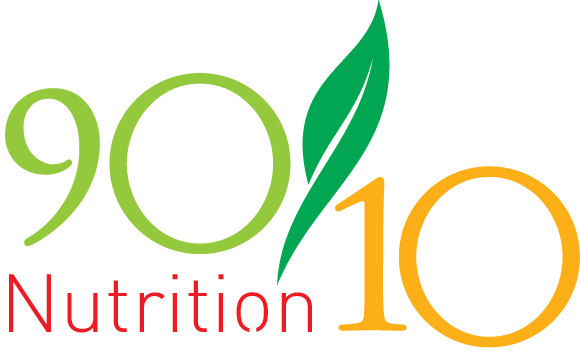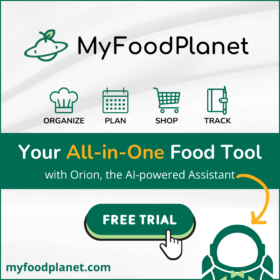Some people tend to be more comfortable with strict rules even if they don’t make sense in certain contexts. It’s easier that way in a lot of ways. You find a set of rules to follow and just follow them. Done.
I tend to be more of a “rule of thumb” or general philosophy follower. I’ll adopt a general philosophy that makes sense and then apply it within the context of the situation and see if it still makes sense. I’m sure this drives the other type of person absolutely insane. Heidi is actually a good example of a rule follower. She prefers a set of rules over my philosophy style. I wish I could get a gif of Heidi to replace the Kramer one below, LOL.
These two types of people (which have been oversimplified and made black and white for illustration purposes) are probably why people have differing levels of success with 90/10. Or, at least maybe it is why there are differing levels of passion for the 90/10 way.
You see, to some people, the 90/10 tiers should be a hard list of rules to follow. You should be able to just take any list of ingredients and bounce it off of the tiers and say one of three things: Good, caution, not so good. To others (including myself…and I created it), it’s a little more fluid and contextual. The system works very well in most situations, but you have to keep in mind the overall philosophy or you end up still falling for food industry tricks and gimmicks.
THE OVERALL PHILOSOPHY
In our first book, 28 Days To Clean, I defined clean eating as
“Eat foods in a state as close to their natural state as possible. Minimize or avoid refined grains, refined sugars, overly-processed foods and artificial ingredients.”
This is the overall philosophy I want everyone to keep in mind. A very similar (but not identical) way to say this is just simply “eat whole foods.”
The 90/10 tiers are intended to help with that endeavor but they are not a perfect list of rules. Because of this, one of the most common questions we get in our 90/10 community is something along the lines of “what about this ingredient that is listed in this packaged food?” It’s usually something like brown rice syrup, modified corn starch, or high oleic sunflower oil. Those things aren’t specifically listed on the tiers, so are they good or not?
Well, the whole “eat whole foods” philosophy would say no. These are not whole foods. They are either modified or extracted from whole foods. But, that’s not a perfect rule to follow either because avocado oil is extracted from avocados and olive oil from olives. Almond milk isn’t the whole almond. Is whole milk a whole food? Is heavy cream or half and half not a whole food? It gets very murky very quickly.
So, let me give you a slightly different take on the whole food philosophy that may help you. This may NOT help you if you just want a concrete rule to follow. If you are that type of person, you may want to just apply the tiers or get one of us to make a determination of what tier an item is on and move on. But, if you are ok with a little fluidity in your nutritional thought process, consider this next section.
THE EXTRACT PHILOSOPHY
When I’m considering a food that is technically not a whole food, I always consider the source in relation to the end product. I simply ask myself if this non-whole food makeS sense given the source.
Example: Avocado oil is a fat. Do avocados have a lot of fat? Would they make a good source of fat for something like a cooking oil or salad dressing oil? Well, yes. They are quite fatty and that makes some sense. I may not understand fully the difference between types of fats and cooking oil temperatures (although you can get more on that in this blog series), but it does makes sense to make oil out of avocados.
Example: Brown Rice Syrup. This is a sweetener that you might find in some healthier (or marketed as healthier) products like granola bars. Is brown rice sweet? Is it something I would expect to use to sweeten something at home? Could I add brown rice to a dish to make it sweeter? Hm. No, that doesn’t make sense. This seems a bit suspect. It’s possible that I don’t understand fully but it’s suspicious at the very least.
Are you seeing the general philosophy? Some things are not technically whole foods but they make total sense as healthy foods that aren’t quite whole. Other things may be healthy foods but they are a bit suspect since they aren’t whole foods and aren’t an obvious choice for that purpose. Other things are just clearly processed garbage.
THE CORN EXAMPLE
It’s well documented that an inordinate number of products in America are made from corn. We know why. You can read from a great many resources such as the well-written book by Michael Pollan, “The Omnivore’s Dilemma”, how America subsidized corn production to a level that far exceeded demand. The result was that industries found ways to use that corn. It was cheap because of the laws of supply and demand, so we feed cows with it (not what they are supposed to eat), make sweeteners out of it, and even make things like paint and textiles from it.
That’s not to say that it is necessarily bad to make some of these non-food items from corn, but when it comes to food items, it doesn’t make sense to make some of these items from corn unless there is just so much corn that it’s cheaper. Coca-Cola used to be made with cane sugar. Any guesses as to why it switched to high fructose corn syrup?
THE BOTTOM LINE
Yes, the title of this section is intended to have a bit of a double meaning. Most of the reason we are even talking about all of this is because of money.
The bottom line is that you should stick as close to “whole foods” as possible as a first step. Then, evaluate foods that aren’t technically whole foods in context. Ask yourself, “does this make sense.” Does it make sense to get oil from an avocado or an olive? Yes, those are “oily”.
Does canola oil make sense? Well, do you even know what a canola is? That might be a Google project for you. Does it make sense to get protein from a pea or from brown rice? If you can’t easily answer these questions about an ingredient you find in a food, your guard should be up. After doing some checking, you might find that it DOES make sense. Or, you might find that it’s just another industry trick to cut cost or make you think something is healthier than it is.



Comments (0)